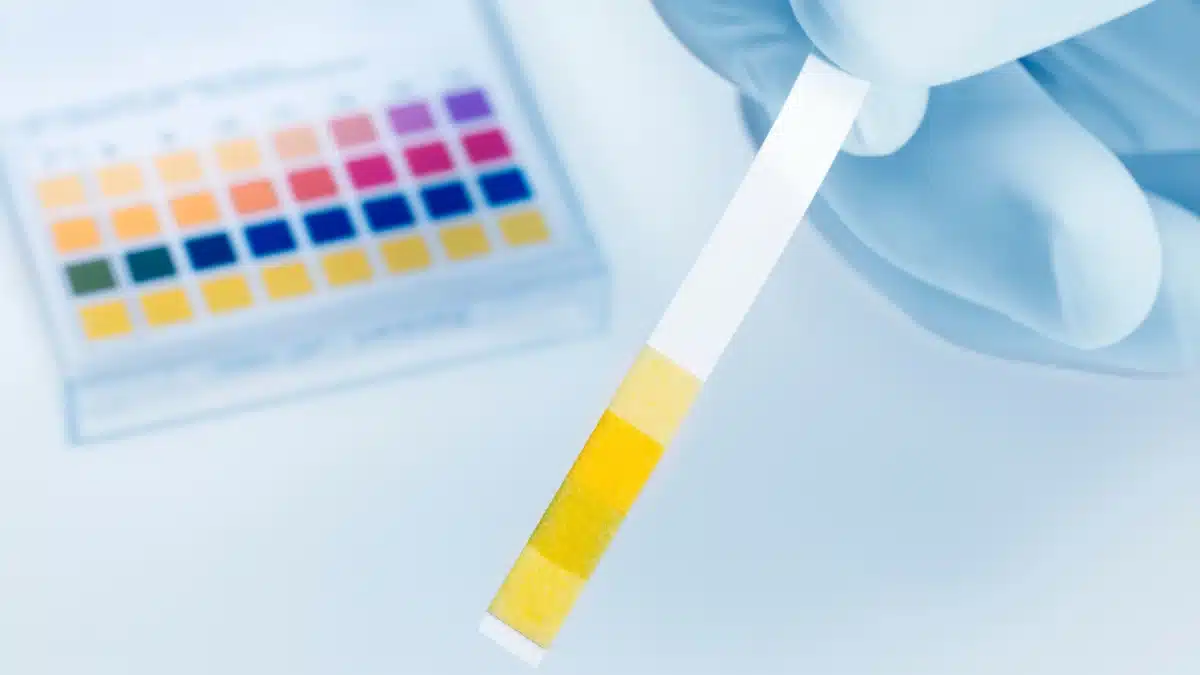pH of Semen: Understanding Influencing Factors and Health Implications
Semen, the fluid that carries sperm, is a complex mixture produced by the male reproductive system.
It is composed of various organs and glands, including the testes, epididymis, prostate gland, and seminal vesicles.
These all contribute to the overall composition of semen and influence its pH.
pH refers to the alkalinity or acidity of the fluid. It is a crucial aspect in understanding semen composition.
This article will discuss the importance of semen pH, its normal range, and how deviations from this range can impact male fertility.
pH range of semen
The pH of semen is typically slightly alkaline, ranging from 7.2 to 8.2.
This alkalinity is essential for maintaining the viability and motility of sperm.
The pH-neutral semen helps to neutralize the acidic female reproductive tract.
This helps in creating a more favorable environment for sperm survival and movement.
Factors influencing semen pH
Several factors contribute to the regulation of semen pH, including the following:
Prostate gland secretions
The prostate gland is located below the bladder, responsible for producing a significant portion of seminal fluid.
It is a walnut-sized organ in males.
The prostate produces an alkaline fluid that is rich in enzymes, zinc, and other substances.
This alkaline nature helps to neutralize the naturally acidic environment of the vagina and the urethra.
By doing so, the prostate gland contributes to the regulation of the overall pH of semen.
Seminal vesicle secretions
The seminal vesicles are paired glands that turn seminal fluid into semen.
Seminal vesicles produce a fluid rich in fructose and other nutrients that nourish and support the sperm.
This fluid is also alkaline, contributing to the overall pH of semen.
Epididymal secretions
The epididymis is a coiled tube that is located on the back of each testicle.
The secretions from the epididymis contribute to the composition of semen, including its pH.
These fluids provide additional nourishment and support for sperm, helping to maintain their viability and functionality.
Unraveling the Mysteries: Does Semen Have Protein?
Bulbourethral glands
The Bulbourethral glands are small structures located along the urethra.
Urethra is a tube that carries both urine and semen out of the body.
The fluid from the urethral glands also contributes to the pH regulation of semen.
While the volume of fluid from these glands is relatively small compared to other contributors, it adds to the overall alkalinity of semen.
Clinical implications
The pH of semen is a parameter that also plays a role in assessing male fertility.
Deviations from the normal range can have implications for reproductive health.
Abnormal semen pH levels may be associated with various conditions, such as:
Prostatitis
Prostatic fluid is typically alkaline.
However, in cases of Prostatitis, there can be alterations in the composition of prostatic fluid.
This inflammation might affect the pH balance, potentially leading to a more acidic environment.
Infections

Infections of the male reproductive tract can influence the pH of semen.
Inflammatory responses triggered by infections may lead to changes in the secretions from various reproductive organs.
These changes can result in an imbalance in the acidic-alkaline ratio, affecting the overall pH of semen.
Obstruction in ducts
When ducts are obstructed, there may be a reduced contribution of alkaline fluids, causing the overall pH of semen to deviate from the normal range.
This obstruction not only affects pH but can also impact the volume and consistency of semen.
Regular assessments of semen pH are an integral part of male reproductive health evaluations.
These assessments contribute to the early detection of abnormalities and monitor treatment progress.
Conclusion
The pH of semen plays a crucial role in male fertility, with a normal range of slightly alkaline, from 7.2 to 8.2.
This alkalinity is vital for sperm viability and motility.
The regulation of semen pH involves contributions from various glands, including the prostate, seminal vesicles, epididymis, and urethral glands.
Deviations from the normal pH range can have clinical implications, such as Prostatitis, infections, and duct obstructions.
These conditions may impact sperm health and fertility.
Regular assessments of semen pH are essential in evaluating male reproductive health.
Frequently Asked Questions
What is the pH range of semen?
The pH of semen typically falls within a slightly alkaline range, specifically from 7.2 to 8.2. This alkalinity is crucial for supporting sperm viability and motility and countering the acidic conditions within the female reproductive tract.
What are the factors that influence semen pH?
Various factors contribute to semen pH, including secretions from the prostate gland, seminal vesicles, epididymis, and urethral glands. These fluids collectively regulate the overall alkalinity of semen.
Does the pH deviation of semen an indicator of any health conditions?
Yes, deviations from the normal pH range can signal health issues. Conditions like Prostatitis, infections, or duct obstructions may lead to changes in semen pH, potentially affecting sperm health and fertility.
How does the prostate gland affect the pH of semen?
The prostate gland produces an alkaline fluid rich in enzymes and zinc, contributing to the neutralization of acidity in the urethra and vagina. This alkalinity from the prostate is essential for maintaining the pH balance of semen, supporting sperm survival and motility.
WowRx uses only high-quality sources while writing our articles. Please read our content information policy to know more about how we keep our content reliable and trustworthy.






